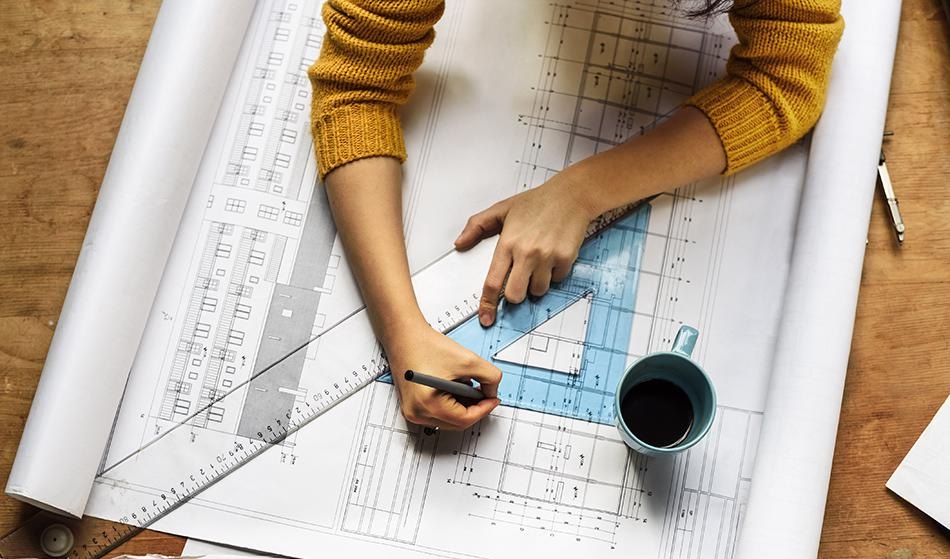
Hitdelight / Shutterstock
There is a global movement to move away from the use of fossil fuels in favor of renewables. People, governments, and companies are making carbon emissions a priority and are future-proofing society by switching from a reliance on the depleting non-renewable sources towards renewable, clean technology sources.
This trend has boosted the green building industry as the demand for environmentally responsible structures increases. Recent research has found that green building activity will continue to increase, with almost half of respondents claiming that the majority of their future building projects will be green by the year 2021.
Solar Energy Powering Future Green Buildings
Photovoltaics is the process of converting energy from sunlight into electricity. It is the most popular method for harnessing solar energy and converting it into a usable source of power. To do this, solar cells within solar panels using semiconducting materials capture photons that knock electrons free from atoms, and in doing so generate a flow of electricity.
Globally, by 2023 solar PV will account for 4% of all energy output, however, it is showing the fastest growth rate out of all energy sources in both the US and worldwide. From 2018 to 2019 global installations of solar PV increased a huge 17.5%.
Architects are facing the fact that solar is here to stay and they are having to adopt new designs that incorporate this renewable energy to meet the demand for using solar energy to power buildings. Several architectural projects around the globe have proven that architecture is embracing this challenge and is coming up with elegant ways to incorporate photovoltaics into building designs.
How Architects are Incorporating Photovoltaics
The challenge facing architects is the need to design a building with solar panels that are positioned in a way that optimizes their performance, allowing their cells to capture the most light to produce optimum power output while being aesthetically pleasing and meeting client briefs.
Current experimentation is happening in this space, with scientists and architects testing different ways of using photovoltaics. Below we look at the most innovative solutions to incorporating photovoltaics with architecture.
Los Angeles Clipper’s Sports Venue by AECOM
The LA clippers stadium was designed by AECOM to create an architectural beacon that not only exceeds current environmental standards but also boosts economic development. The building has a specifically designed roof with solar panels placed in a way that achieves maximum energy efficiency. The complex is predicted to bring in $268 million in economic activity for the area of Inglewood each year.
Prefab Cottage in Seattle by Wittman Estes and NODE
Wittman Estes and NODE partnered to create a self-sustaining and affordable 1 bedroom home, with the capability to run entirely on solar PV power. The companies created a series of models that are built from prefabricated components, giving them the potential to be shipped almost anywhere and put up in a few days. The innovation has implications for bringing solar-powered affordable homes to the masses.
IKEA's Research Lab Space10
IKEA has designed a miniature wooden village to show how future communities could create and live off solar energy. The proposed system incorporates solar panels into each building that generates power which is shared by the entire community. This project demonstrates how future communities could be constructed to reliably sustain themselves through solar.
Stanford University’s Central Energy Facility by ZGF Architects
The Central Energy Facility at Stanford was cleverly designed to disguise the large solar panels it uses to power itself as an elegant shade trellis. The design shows how architecture can be used to seamlessly incorporate clunky renewable structures into a building.
The La Jolla in California by ZGF Architects
The La Jolla is the US’s first net-zero energy biological lab, it incorporates a solar panel roof that overproduces power for the grid, winning it the AIA green building award this year.
Future Innovations
Scientists are experimenting with adding a transparent layer of solar cells to glass through colorful paintwork to create solar glass. Also, vertical PV panels are now being incorporated alongside rooftop panels, the LA 28th Street Apartments is a perfect example of buildings that are leading the way in solar wall design.
In the future, we can expect to see further development of these innovations which incorporate photovoltaics and architecture to not only help the adoption of renewables but do it in a way that is still aesthetically pleasing.
Source
Disclaimer: The views expressed here are those of the author expressed in their private capacity and do not necessarily represent the views of AZoM.com Limited T/A AZoNetwork the owner and operator of this website. This disclaimer forms part of the Terms and conditions of use of this website.